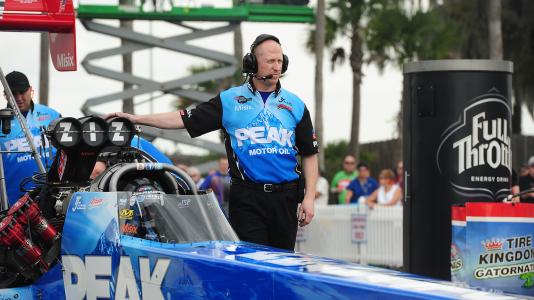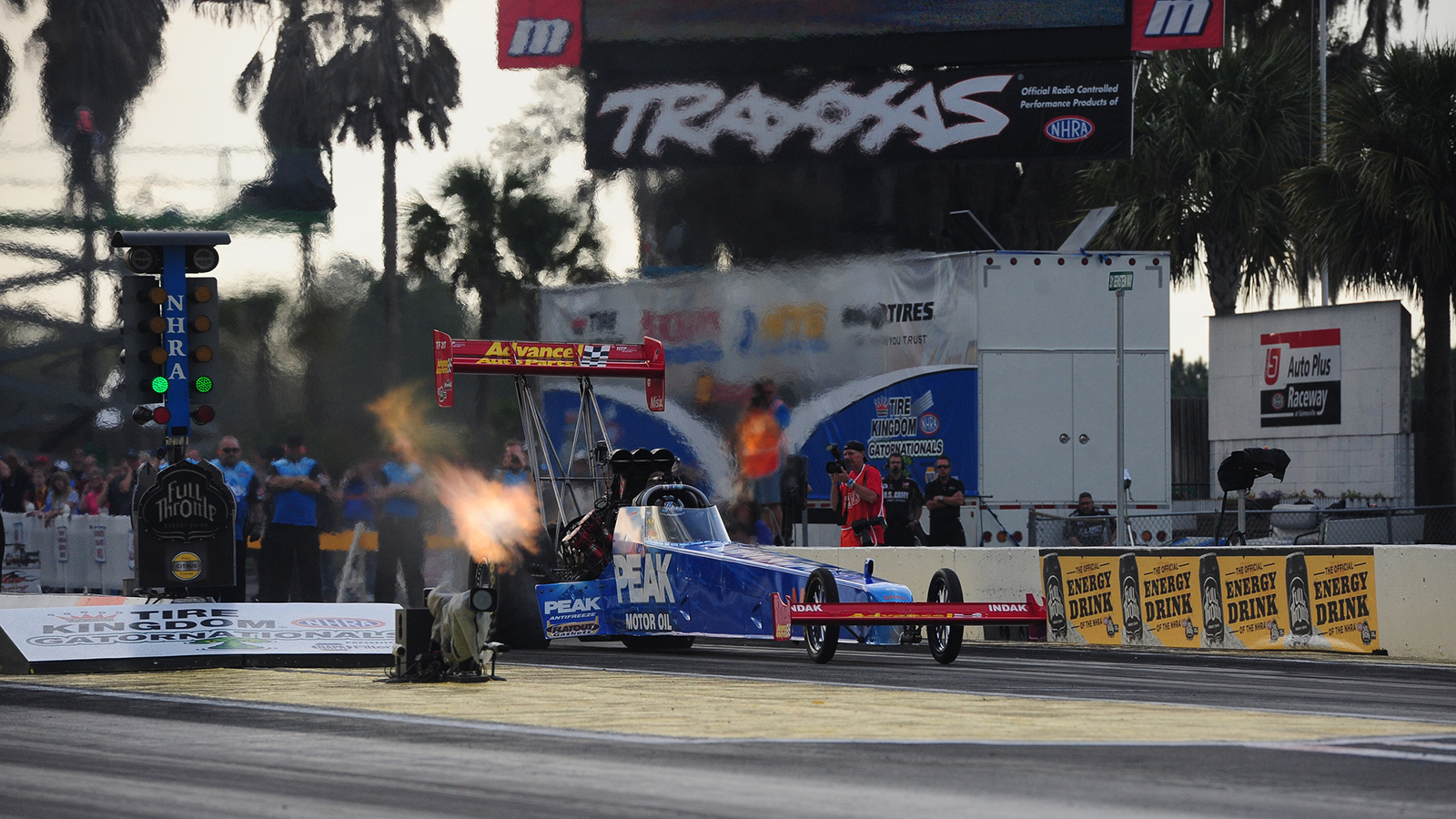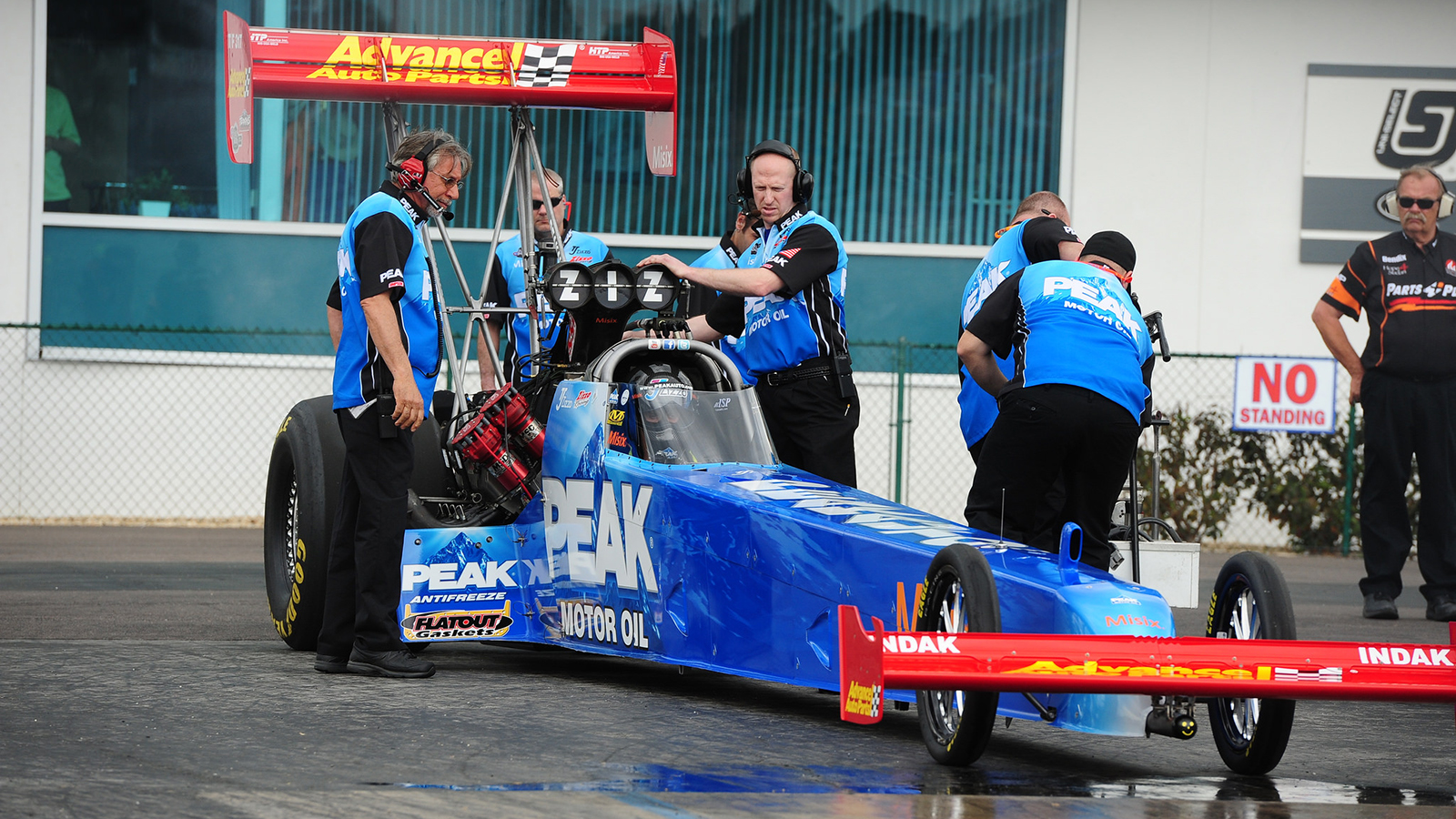
Mike Kern
Argonne Engineer, Advanced Powertrain Research Facility and Top Fuel Dragster Crew Chief, National Hot Rod Association
ARGONNE NOW: What’s your day job?
KERN: I’m an engineering technical assistant at Argonne, and I work in the lab’s Center for Transportation Research testing and tweaking cars and engines to make them more efficient.
And your other job?
I’m also crew chief for a top fuel dragster team in the National Hot Rod Association, which is the premier drag racing organization in North America
How did you get into that?
I was kind of born into it. My dad owned his own transmission shop and also raced cars growing up, so I traveled all over the country with him—just minor drag racing around the country. These cars are the fastest accelerating vehicles on wheels. In raw numbers, they go from zero to 320 miles per hour in under four seconds.
What’s your schedule like?
Aside from my full-time job here, I work on the car two days a week: Tuesday night and all day Sunday. That’s anywhere from 12 to 20 hours a week on the racecar. Plus racing weekends, which are all three-day events—last year we did 10 races—so basically every vacation day I have goes towards racing.
What is the margin of victory in a drag race?
Thousands to ten-thousandths of a second. We race to 1,000 feet, and in that distance the cars accelerate from a standing start, zero, to upwards of 320 miles an hour. The national record is 3.72 seconds; we’ve done a best of 3.83 seconds
So you miss it if you blink.
We call it forty hours of preparation for every three seconds down the track.
What does a crew chief do?
I’m responsible for all the decisions regarding how the car runs on the racetrack. I manage the crew at the racetrack and all the jobs they have. I’m responsible for the whole car getting put together the right way. We call it organized chaos. Between every round of racing, we completely disassemble the engine and put it back together in under an hour.
Why?
Because the incredible amount of horsepower that the engine generates is stressful on all the components, so we check every component after every run and put the whole engine back together. Now that doesn’t mean we take it apart and look at those same pieces right away; we have another set of parts that we put on the car in order to make the next run. But everything that comes off the car gets inspected before it goes back on the car again.
How many times do you have to take the engine apart?
In a race, there are two days of qualifying, which is two runs per day. And then it’s a single-elimination 16-car format on Sunday, so if you win all four runs, you win the race.
What kind of tweaks are you making to the engine?
Depending on the weather and track conditions, I have to make all the tuning decisions. And within that everything is critical. These are the fastest accelerating cars in the world, so little changes make a big difference. The air temperature and the amount of sunlight affect the amount of traction you can get on the track. The humidity and the air pressure also affect how the engine runs because an engine is basically a giant air pump, in a sense. The more air you can move through the engine, the more fuel you can burn, and the more power you can make—and the quicker and faster the car can be.
Tell us a little bit more about your day job.
My main job at Argonne is to run our climate-controlled test dynamometer, make sure all the tests get run properly, the instruments are working, and collect the data.
What’s a dynamometer?
A dynamometer is basically a treadmill for a vehicle. It simulates all the stresses of driving on a road you would see in the real world, only in a controlled environment. So we can control temperature, humidity, everything—it’s always the same and repeatable. Then we can throw in different variables to see how the vehicle reacts in different situations.
Is it similar to tuning engines for a race?
In races, the car is fully instrumented, and we collect data from every run and use it to make a decision for the next run, which is the same way you run a lab. The difference is that at Argonne we’re more into learning how to conserve energy and not burn fuel, and my other job is burning as much fuel as you can to make as much power as you can. Although they are complete opposites, all the theory is identical. In a race we’re trying to run the car at maximum power as efficiently as possible, and at Argonne we’re finding what makes vehicles run most efficiently with the least amount of fuel. So, similar but different.
Do you apply things from one job to the other?
Absolutely. Things I learn and see racing—how to think about a problem, different ways of collecting data and doing tests—I can bring to the lab and say “Hey, I saw this idea,” or I can apply the same principles. And some ideas we work with at Argonne—what you see different scientists and engineers changing with an engine—I can take back and apply as different things to do for the racecar.
Do your coworkers at Argonne come out to races?
KERN: They do. They think it’s really cool.

